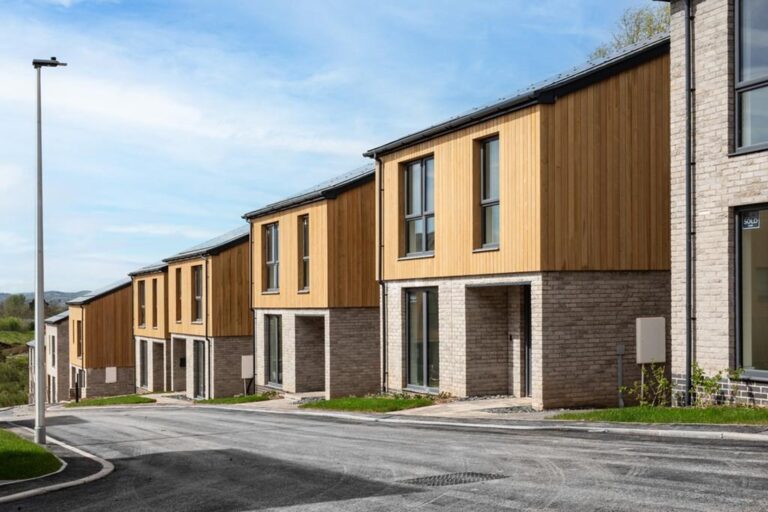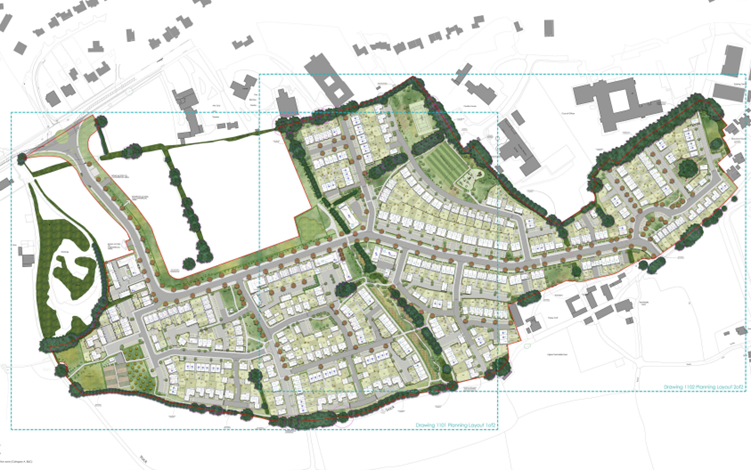Neighbourly Matters
Living in close proximity can lead to conflict, with many owners’ knowledge of their boundary often unclear. Access rights and covenants can often be open to interpretation.
Home / Services / Party Wall Act 1996 / Neighbourly Matters
Neighbourly Matters services for the South West
While the majority of Vickery Holman’s neighbourly matters instructions are regarding resolution of disputes, we encourage clients to contact us when considering drafting agreements to learn from the misinterpretations and lack of clarity we see too often in agreements and plans.
Despite the general presumption by property owners and the general public that Land Registry documents define the boundary, this is not the case in the vast majority of title deeds. The “red line” provides a “general position of the boundary” but does not define its exact location. On a small island where space is increasingly a premium the assumptions made by owners (even over long periods of time) can be misconceived and lead to boundary disputes. Historically documentation was not prepared in anticipation of the minute scrutiny that property owners often now require.
Vickery Holman can provide advice as a mutually agreed surveyor by the parties to assist in mediating and seeking a resolution to the dispute. This often results in either a legal document being prepared or an application for determination of boundary made to the Land Registry.
We undertake appointments as expert witness to investigate boundaries and prepare Civil Procedure Rule (CPR) 35 compliant reports for submission to Court. We have often provided evidence in Court.
We also deal with other areas of dispute including:
Party Wall Act 1996
Access agreements
Party Wall etc. Act 1996, Access to Neighbouring Land Act and specific covenants do not always encompass all situations where access to, or oversailing of, a neighbouring property is required. Vickery Holman have undertaken instruction from both owners and neighbours to negotiate access rights and encompass these into an agreement to afford the right of access and protect the neighbour’s interest. The access agreement may be drafted in conjunction with owner’s solicitors or stand-alone documents prepared by Vickery Holman.
Scaffold licences
When undertaking work to a property, a scaffold may be required to be placed on to adjoining land not owned by the person undertaking the maintenance/development. The right to place the scaffold on the neighbour’s land may arise from the Party Wall etc. Act 1996, Access to Neighbouring Land Act or other specific covenants or agreements. However, a specific licence may be required to set out the terms and timescale for placement of scaffold and making good damage and compensation that may arise.
Crane licences
Development often requires cranes to efficiently facilitate construction. There are many crane types, sizes and capacities. There is no right for the jib of a crane to swing across a neighbour’s land, but there are agreements to facilitate this, which are encompassed within a crane licence. Vickery Holman work with developers and contractors to minimise risk and cost and coordinate licences that may be required. We also work with neighbouring owners to protect their interests and negotiate oversailing rights.
Access to Neighbouring Land Act
Access to adjoining land or a neighbour’s property is sometimes required to facilitate the painting, repair and maintenance of a property. The Access to Neighbouring Land Act provides rights of access to maintain the property. If access is denied, there is the ability to seek access legally. The existence of the Act means that very few circumstances arise where enforcement of the Act is required in Court. Nevertheless, often access agreements are required to appropriately control the access, be this timing of work, placement of scaffold, recording of the condition of the property and making good any damage. Rights relating to residential and commercial properties differ. Payment for access to maintain residential property is not normally required.
Trespass
Where trespass has occurred owing to no appropriate agreement being in place, Vickery Holman have assisted in the enforcement of removal of the trespass or negotiation and regularisation of any trespass that has occurred.
Rights to light
Development in confined areas can lead to a loss of light to your or a neighbours premises. The statutory planning process reviews shadows but not infringement of light. Development may reduce the light to a property, which may not necessarily be an infringement. Detailed analysis is required to assess whether a reduction in light results in an actionable infringement.
Neighbourly Matters Case Studies
Neighbourly Matters FAQs
How can a surveyor help me with a neighbourly matter?
A surveyor can be invaluable in resolving disputes with neighbors, particularly those related to property boundaries or land use. The surveyor can review the information related to the matter and advise on ways to resolve any existing or potential disputes. The surveyor can provide independent, impartial advice and can act as a mediator between parties if needed.
Can a surveyor help me to identify a boundry?
A surveyor can advise you on the likely location of your boundaries using property deeds, historical records, and physical identifiers on the ground. If instructed by both parties either side of a boundary, the surveyor can accurately determine the legal boundary between the properties. This can help clarify where your property ends and your neighbour’s property begins, and can help resolve disputes over encroachments or trespassing.
Can I have a say on what my neighbour uses their land for?
If the dispute involves how your neighbour is using their land and whether it infringes on your rights (e.g. blocking access, or significantly blocking light to your windows), a surveyor can assess the situation and provide expert testimony or evidence regarding the impact of their actions.
Will the matter end up in Court?
Our aim is to help resolve disputes to avoid going to Court. Most disputes can be resolved with alternative dispute resolution procedures, such as mediation or adjudication. The surveyor can assess the matter and advise on the available options so you can make an informed decision on how to proceed. If legal action is required, our surveyors are often called upon to provide expert witness advice in legal proceedings related to property disputes. Their professional expertise carries significant weight in court, helping to resolve disputes.
Do neighbourly matters always end up in Court?
Not always, and we aim to resolve disputes before the matter escalates to legal proceedings. In some cases, surveyors can act as mediators between you and your neighbour, facilitating discussions and negotiations to reach a mutually agreeable resolution. They can present objective data and options for compromise based on property information and regulations.
What would a Surveyor Produce for me?
A surveyor can provide detailed reports, plans, and documentation of their findings, which can be used as evidence in legal proceedings or negotiations. Having clear, accurate documentation can strengthen your position and help you make informed decisions.
Is a local surveyor preferrable in these matters?
Surveyors are knowledgeable about local planning laws and building regulations, as well as local construction, geology and other pertinent matters. If your neighbour’s actions violate any regulations, a surveyor can provide guidance on how to address the issue and ensure compliance.





